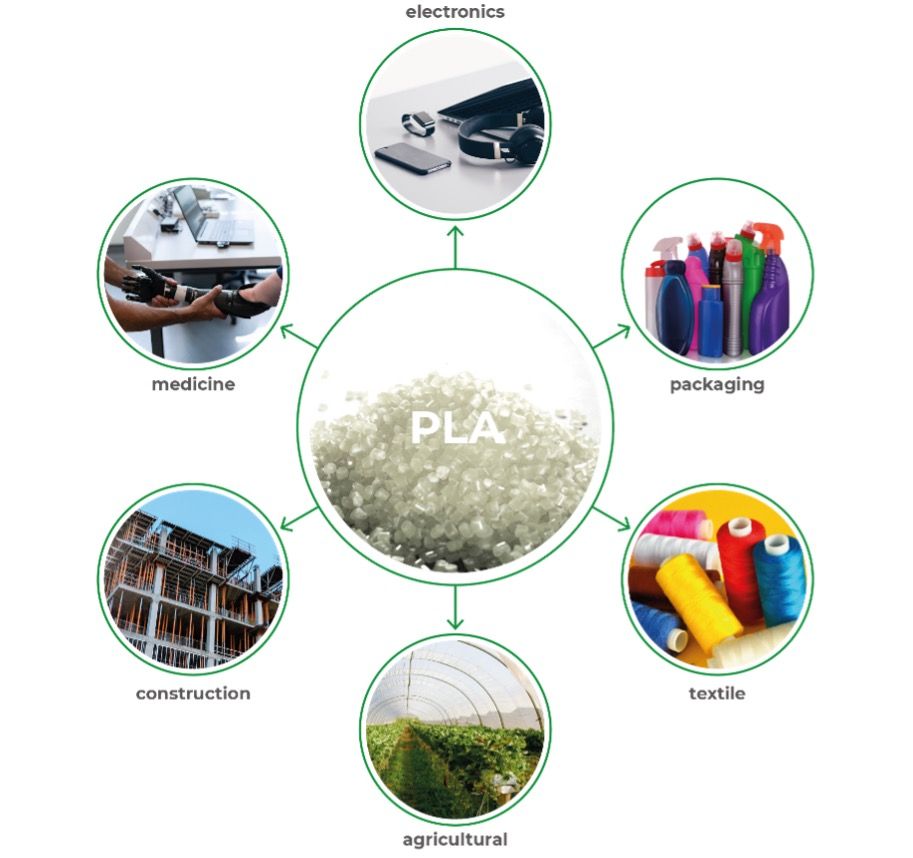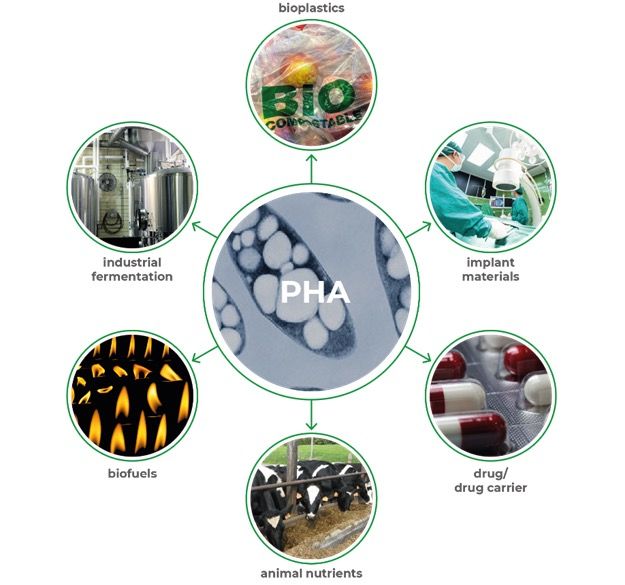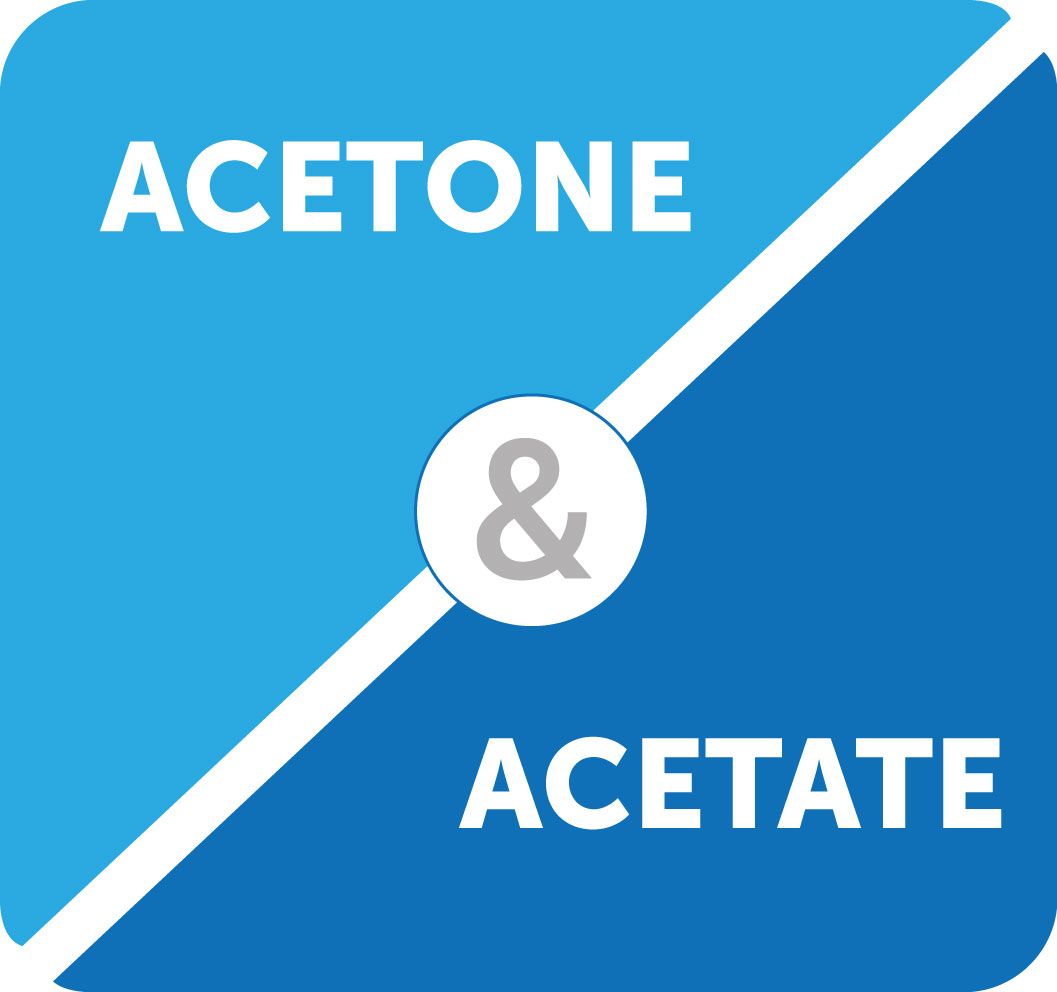Products

Poly(lactic acid)
PLA
Poly(lactic acid) or polylactide (PLA), is industrially obtained respectively, through the polymerization of lactic acid (LA) or by the ring-opening polymerization (ROP) of lactide (the cyclic dimer of lactic acid, as an intermediate). In the last years, PLA has gained enormous attention as an alternative to petrochemical-based synthetic polymers (PET, PS, PE, etc.) in packaging and/or textile sectors.

Poly-hydroxy-alkanoates
PHAs
Poly-hydroxy-alkanoates (PHAs) is a kind of macromolecular bio-polyester with similar material properties to traditional petroleum-based plastics, but it can be synthesized from renewable resources.

Acetone and acetate
Acetone is the simplest and smallest ketone and one of the most important organic solvent in industry. Acetone applications are:
- solvents 29%;
- methyl methacrylate production 24%;
- bisphenol-a production 22%;
- production of other chemicals, including aldols, acetone cyanohydrin and isopropanol 25%.
Acetate represents a highly attractive, alternative microbial carbon source for industrial biotechnology. Currently, the largest proportion is related to its transformation into various polymeric materials and derivatives, including vinyl acetate monomer (VAM), acetic anhydride, acetate esters, as well as its use as solvent in synthesis of terephthalic acid as raw material for polyethylene terephthalate (PET) production.